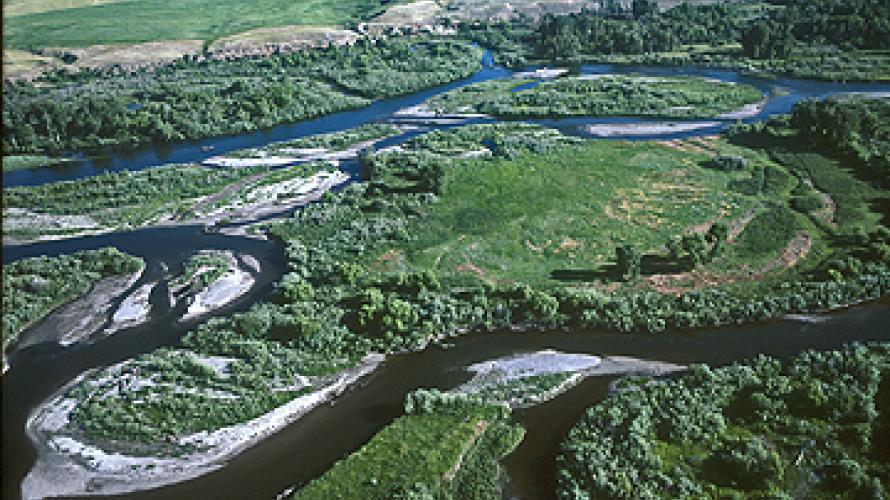
Missouri Headwaters State Park
(courtesy Montana State Parks)
Just outside of Three Forks, you’ll find Missouri Headwaters State Park, the confluence of the Madison, Jefferson and Gallatin rivers which form the 2,300 mile Missouri River.
At Missouri Headwaters State Park, you can still find the area looking much as it did historically - with much of the region's abundant wildlife, vegetation, and scenic beauty preserved - making it clear what has attracted people for thousands of years.
Did you know? The three rivers that converge to form the Missouri River are named for President Thomas Jefferson, Secretary of State James Madison and Treasury Secretary Albert Gallatin!
You won’t run out of activities at Missouri Headwaters!
- Looking to camp in history? There are 17 campsites available and you can even rent a tipi!
- Interpretive displays describing the area’s cultural and natural history can be found to help guide you!
- Take your bike for a spin on the many trails throughout the park!
- Not much of a biker? Use the trails for a scenic hike instead!
- Take a float down the river, you’ll have your choice of three!
- Visit Fort Rock to take a look at historic pictographs
The rich, fertile soil along with the proximity to fresh water, brought the Flathead, Bannock and Shoshone Indians to the region and later trappers and settlers, and now this beautiful land has been preserved as a state park for visitors just like you.
Known for an abundance of wildlife, Missouri Headwaters State Park is a great place to explore, but don’t forget your bug spray!
In addition to its vast natural resources and outdoor activities, Missouri Headwaters State Park also boasts extensive cultural history - ranging from the tribes that lived there beginning 3,000 years ago to Lewis and Clark to fur traders to settlers.
In late July 1805, William Clark and a small number from the Corps of Discovery reached the Headwaters while scouting for Shoshone Indians, whom they hoped would sell them horses. It was Sacajawea, who recognized the area as where she was captured as a child by the Hidatsa, that led the expedition successfully there.
While at the confluence, Clark left a note for Meriwether Lewis to find and later, Lewis Rock was named for him.
In addition to its history with the Corps of Discovery, you can also find the remnants of the long empty, western town of Gallatin City. Settlers convinced that commerce would arrive above Great Falls, and with hope to supply the gold camps in Virginia City and Helena, Gallatin City was founded in 1862, a mere year before what is now Bozeman was platted out by John Bozeman.
The city eventually moved to the far side of the river as Gallatin City II, and later died when the Northern Pacific railroad decided to lay track south of town and making the hoped-for trade route no longer viable.
You can still see the original Gallatin City Hotel amongst other artifacts at Missouri Headwaters State Park.
Missouri Headwaters State Park features several miles of paths for walking, biking, and hiking, that traverses the old Gallatin City townsite along the banks of the rivers. This trail then leads you to the top of the bluff overlooking the river valley and breathtaking view of the convergence of the rivers.
You'll also find interpretive stations telling the history of the area from ancient times to the modern era throughout the park.
